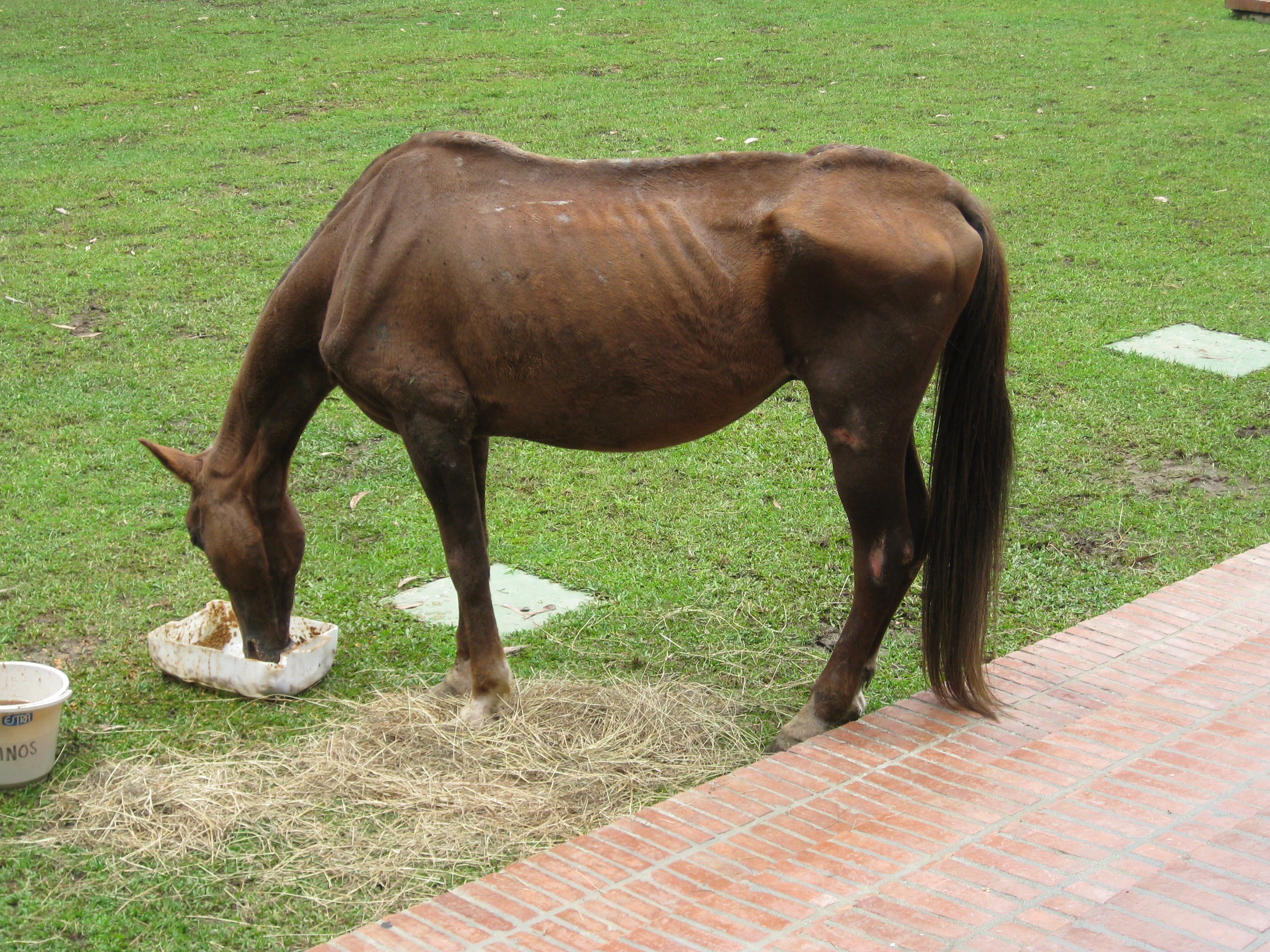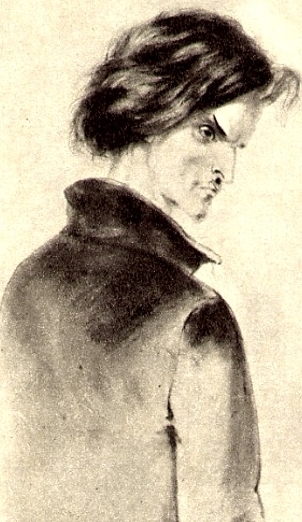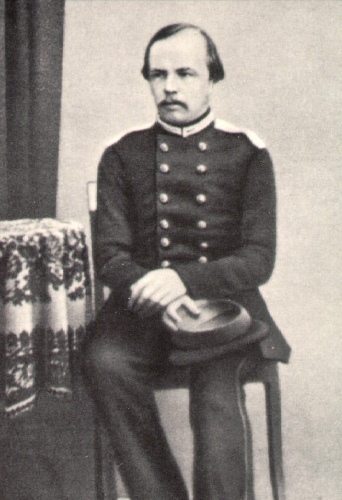|
Horse-ripping
Horse-ripping, or horse slashing, is an animal cruelty phenomenon involving serious injuries in horses, often involving mutilation of their genitalia and slashing of the flank or neck. It has not been established, however, how often these injuries are caused by human cruelty. "Horse-ripping" is not an entirely neutral term since it implies there is always a human act behind the mutilations. Incidents There were 160 reported incidents in Britain between 1983 and 1993, and 300 incidents in Germany between 1992 and 1998. It has become a widespread belief in recent years that these attacks are carried out deliberately by people, and generally sexually motivated. Animal welfare officers have also drawn links between attacks on horses and 'fertility cults'. At least one case initially believed to be horse-ripping was later shown to have been caused by another horse. Convictions are rare, though a man has been convicted in the Netherlands for a large number of such attacks on horses and ... [...More Info...] [...Related Items...] OR: [Wikipedia] [Google] [Baidu] |
Animal Cruelty
Cruelty to animals, also called animal abuse, animal neglect or animal cruelty, is the infliction by omission (neglect) or by commission by humans of suffering or Injury, harm upon non-human animals. More narrowly, it can be the causing of harm or suffering for specific achievements, such as killing animals for entertainment; cruelty to animals sometimes encompasses inflicting harm or suffering as an end in itself, referred to as zoosadism. Divergent approaches to Animal rights by country or territory, laws concerning animal cruelty occur in different jurisdictions throughout the world. For example, some laws govern methods of killing animals for food, clothing, or other products, and other laws concern the keeping of animals for entertainment, education, research, or pets. There are several conceptual approaches to the issue of cruelty to animals. Even though some practices, like animal fighting, are widely acknowledged as cruel, not all people and nations have the same defini ... [...More Info...] [...Related Items...] OR: [Wikipedia] [Google] [Baidu] |
Cult
In modern English, ''cult'' is usually a pejorative term for a social group that is defined by its unusual religious, spiritual, or philosophical beliefs and rituals, or its common interest in a particular personality, object, or goal. This sense of the term is controversial and weakly defined—having divergent definitions both in popular culture and academia—and has also been an ongoing source of contention among scholars across several fields of study. Richardson, James T. 1993. "Definitions of Cult: From Sociological-Technical to Popular-Negative." ''Review of Religious Research'' 34(4):348–56. . . An older sense of the word involves a set of religious devotional practices that are conventional within their culture, related to a particular figure, and often associated with a particular place. References to the "cult" of a particular Catholic saint, or the imperial cult of ancient Rome, for example, use this sense of the word. While the literal and original sense of ... [...More Info...] [...Related Items...] OR: [Wikipedia] [Google] [Baidu] |
Arthur & George
''Arthur & George'' (2005) is the tenth novel by English author Julian Barnes which takes as its basis the true story of the " Great Wyrley Outrages". Plot introduction Set at the turn of the 20th century, the story follows the separate but intersecting lives of two very different British men: a half-Indian solicitor and son of a vicar, George Edalji, and the world-famous author of the Sherlock Holmes stories, Sir Arthur Conan Doyle. Roughly one-third of the book traces the story of Edalji's trial, conviction, and imprisonment for a crime he did not commit. About one-third of the book traces the story of Doyle's life and his relationships with his first wife Louisa Hawkins and his platonic lover Jean Leckie. Roughly one-third of the book concerns Doyle's attempt to clear the name of Edalji and uncover the true culprit of the crime. Julian Barnes called it "a contemporary novel set in the past" and the book does not aim to stick closely to the historical record at every point. Ch ... [...More Info...] [...Related Items...] OR: [Wikipedia] [Google] [Baidu] |
Mare
A mare is an adult female horse or other equine. In most cases, a mare is a female horse over the age of three, and a filly is a female horse three and younger. In Thoroughbred horse racing, a mare is defined as a female horse more than four years old. The word can also be used for other female equine animals, particularly mules and zebras, but a female donkey is usually called a "jenny". A broodmare is a mare used for breeding. A horse's female parent is known as its dam. Reproductive cycle Mares carry their young (called foals) for approximately 11 months from conception to birth. (Average range 320–370 days.)Ensminger, M. E. ''Horses and Horsemanship: Animal Agriculture Series.'' Sixth Edition. Interstate Publishers, 1990. p. 156 Usually just one young is born; twins are rare. When a domesticated mare foals, she nurses the foal for at least four to six months before it is weaned, though mares in the wild may allow a foal to nurse for up to a year. The estrous cycle ... [...More Info...] [...Related Items...] OR: [Wikipedia] [Google] [Baidu] |
Rodion Raskolnikov
Rodion Romanovich Raskolnikov ( pre-reform Russian: ; post-reform rus, Родион Романович Раскольников, Rodión Románovich Raskólʹnikov, rədʲɪˈon rɐˈmanəvʲɪtɕ rɐˈskolʲnʲɪkəf) is the fictional protagonist of the 1866 novel ''Crime and Punishment'' by Fyodor Dostoyevsky. The name Raskolnikov derives from the Russian ''raskolnik'' meaning "schismatic" (traditionally referring to a member of the Old Believer movement). The name ''Rodion'' comes from Greek and indicates an inhabitant of Rhodes. Raskolnikov is a young ex-law student living in extreme poverty in Saint Petersburg. He lives in a tiny garret which he rents, although due to a lack of funds has been avoiding payment for quite some time. He sleeps on a couch using old clothes as a pillow, and due to lack of money eats very rarely. He is handsome and intelligent, though generally disliked by fellow students. He is devoted to his sister (Avdotya Romanovna Raskolnikova) and his mo ... [...More Info...] [...Related Items...] OR: [Wikipedia] [Google] [Baidu] |
Crime And Punishment
''Crime and Punishment'' ( pre-reform Russian: ; post-reform rus, Преступление и наказание, Prestupléniye i nakazániye, prʲɪstʊˈplʲenʲɪje ɪ nəkɐˈzanʲɪje) is a novel by the Russian author Fyodor Dostoevsky. It was first published in the literary journal ''The Russian Messenger'' in twelve monthly installments during 1866.University of Minnesota – Study notes for Crime and Punishment – (retrieved on 1 May 2006) It was later published in a single volume. It is the second of Dostoevsky's full-length novels following his return from ten years of exile in Siberia. ''Cri ... [...More Info...] [...Related Items...] OR: [Wikipedia] [Google] [Baidu] |
Dostoyevsky
Fyodor Mikhailovich Dostoevsky (, ; rus, Фёдор Михайлович Достоевский, Fyódor Mikháylovich Dostoyévskiy, p=ˈfʲɵdər mʲɪˈxajləvʲɪdʑ dəstɐˈjefskʲɪj, a=ru-Dostoevsky.ogg, links=yes; 11 November 18219 February 1881), sometimes transliterated as Dostoyevsky, was a Russian novelist, short story writer, essayist and journalist. Dostoevsky's literary works explore the human condition in the troubled political, social, and spiritual atmospheres of 19th-century Russia, and engage with a variety of philosophical and religious themes. His most acclaimed novels include ''Crime and Punishment'' (1866), ''The Idiot'' (1869), ''Demons'' (1872), and ''The Brothers Karamazov'' (1880). His 1864 novella, ''Notes from Underground'', is considered to be one of the first works of existentialist literature. Numerous literary critics regard him as one of the greatest novelists in all of world literature, as many of his works are considered highly influent ... [...More Info...] [...Related Items...] OR: [Wikipedia] [Google] [Baidu] |
Equus (film)
''Equus'' is a 1977 psychological drama film directed by Sidney Lumet and written by Peter Shaffer, based on his play of the same name. The film stars Richard Burton, Peter Firth, Colin Blakely, Joan Plowright, Eileen Atkins, and Jenny Agutter. The story concerns a psychiatrist treating a teenager who has blinded horses in a stable, attempting to find the root of his horse worship. Lumet's translation of the acclaimed play to a cinematic version incorporated some realism, in the use of real horses as opposed to human actors, and a graphic portrayal of the blinding. Despite some criticism of this approach, the film received positive reviews, with awards for Burton, Firth and Agutter. Plot Hesther Salomon, a magistrate, asks her platonic friend Martin Dysart, a disillusioned psychiatrist who works with disturbed teenagers at a hospital in Hampshire, England, to treat a 17-year-old stable boy named Alan Strang after he blinded six horses with a sickle. With Alan only singing TV co ... [...More Info...] [...Related Items...] OR: [Wikipedia] [Google] [Baidu] |
Equus (play)
''Equus'' is a play by Peter Shaffer written in 1973, telling the story of a psychiatrist who attempts to treat a young man who has a pathological religious fascination with horses. Shaffer was inspired to write ''Equus'' when he heard of a crime involving a 17-year-old who blinded six horses in a small town in Suffolk. He set out to construct a fictional account of what might have caused the incident, without knowing any of the details of the crime. The play's action is something of a detective story, involving the attempts of the child psychiatrist Dr. Martin Dysart to understand the cause of the boy's (Alan Strang) actions while wrestling with his own sense of purpose. The original stage production ran at the National Theatre in London between 1973 and 1975, directed by John Dexter. Alec McCowen played Dysart, and Peter Firth played Alan Strang. Later came the Broadway productions that starred Anthony Hopkins as Dysart (later played by Richard Burton, Leonard Nimoy, and An ... [...More Info...] [...Related Items...] OR: [Wikipedia] [Google] [Baidu] |
Chamberlain (office)
A chamberlain (Medieval Latin: ''cambellanus'' or ''cambrerius'', with charge of treasury ''camerarius'') is a senior royal official in charge of managing a royal household. Historically, the chamberlain superintends the arrangement of domestic affairs and was often also charged with receiving and paying out money kept in the royal chamber. The position was usually honoured upon a high-ranking member of the nobility (nobleman) or the clergy, often a royal favourite. Roman emperors appointed this officer under the title of ''cubicularius''. The Chamberlain of the Holy Roman Church enjoys very extensive powers, having the revenues of the papal household under his charge. As a sign of their dignity, they bore a key, which in the seventeenth century was often silvered, and actually fitted the door-locks of chamber rooms. Since the eighteenth century, it has turned into a merely symbolic, albeit splendid, rank-insignia of gilded bronze. In many countries there are ceremonial posts ... [...More Info...] [...Related Items...] OR: [Wikipedia] [Google] [Baidu] |
Race Horse
Horse racing is an equestrian performance sport, typically involving two or more horses ridden by jockeys (or sometimes driven without riders) over a set distance for competition. It is one of the most ancient of all sports, as its basic premise – to identify which of two or more horses is the fastest over a set course or distance – has been mostly unchanged since at least classical antiquity. Horse races vary widely in format, and many countries have developed their own particular traditions around the sport. Variations include restricting races to particular breeds, running over obstacles, running over different distances, running on different track surfaces, and running in different gaits. In some races, horses are assigned different weights to carry to reflect differences in ability, a process known as handicapping. While horses are sometimes raced purely for sport, a major part of horse racing's interest and economic importance is in the gambling associated with i ... [...More Info...] [...Related Items...] OR: [Wikipedia] [Google] [Baidu] |
Karl Gjellerup
Karl Adolph Gjellerup (2 June 1857 – 11 October 1919) was a Danish poet and novelist who together with his compatriot Henrik Pontoppidan won the Nobel Prize in Literature in 1917. He is associated with the Modern Breakthrough period of Scandinavian literature. He occasionally used the pseudonym Epigonos. Biography Youth and debut Gjellerup was the son of a vicar in Zealand who died when his son was three years. Karl Gjellerup was raised then by the uncle of Johannes Fibiger, he grew up in a national and romantic idealistic atmosphere. In the 1870s he broke with his background and at first he became an enthusiastic supporter of the naturalist movement and Georg Brandes, writing audacious novels about free love and atheism. Strongly influenced by his origin he gradually left the Brandes line and 1885 he broke totally with the naturalists, becoming a new romanticist. A central trace of his life was his Germanophile attitude, he felt himself strongly attracted to German culture ... [...More Info...] [...Related Items...] OR: [Wikipedia] [Google] [Baidu] |

_(8536503249).jpg)





